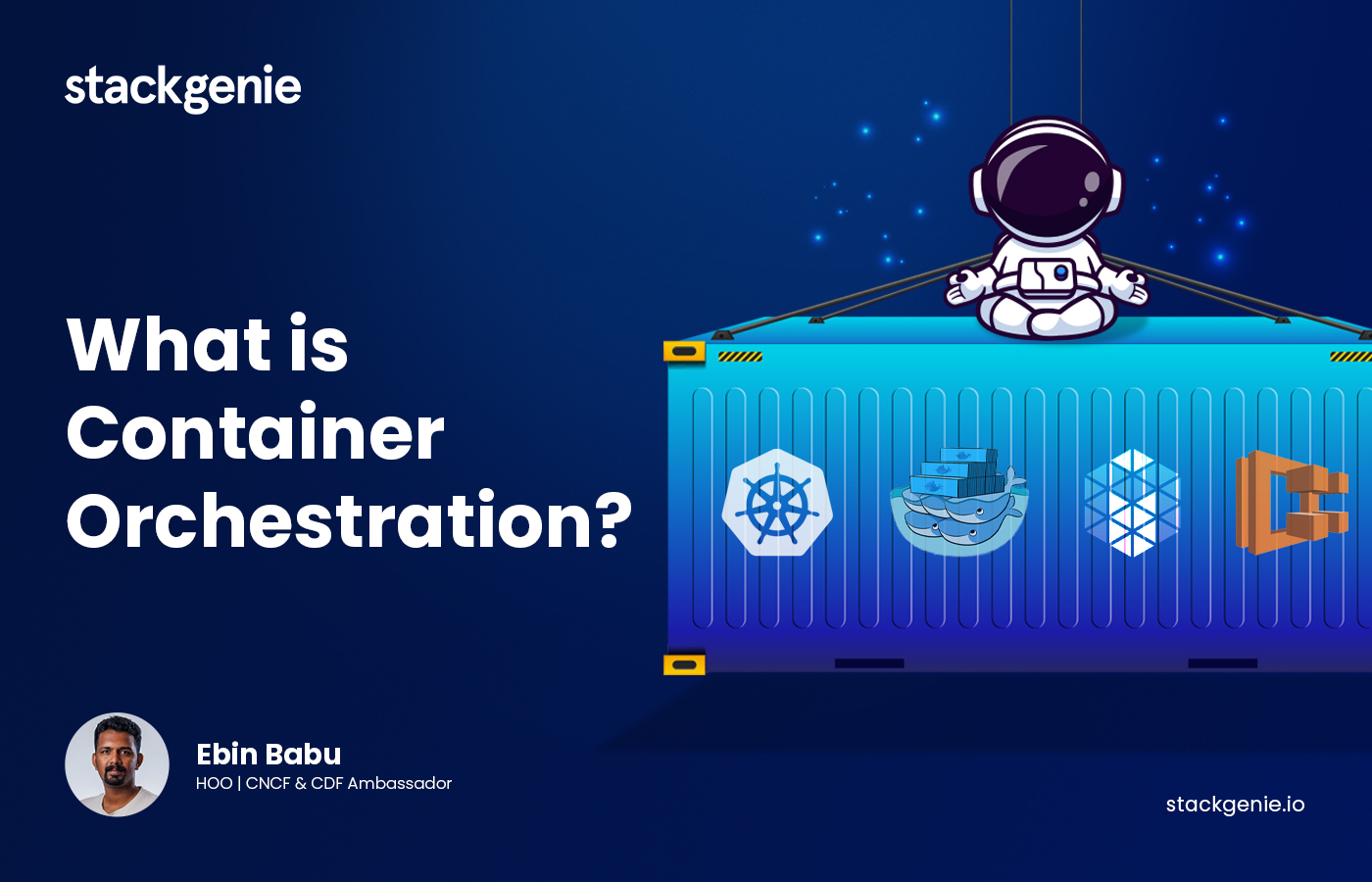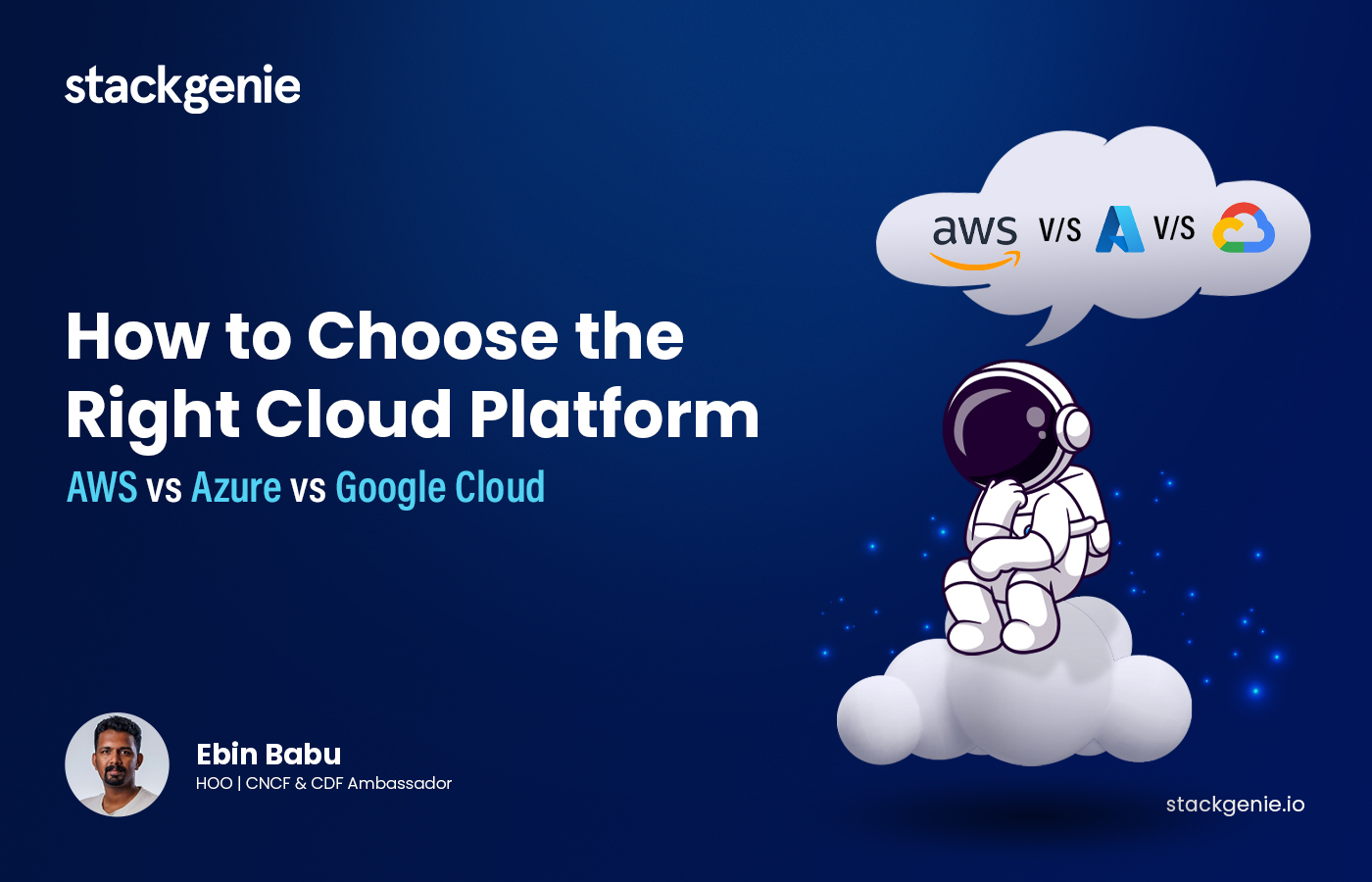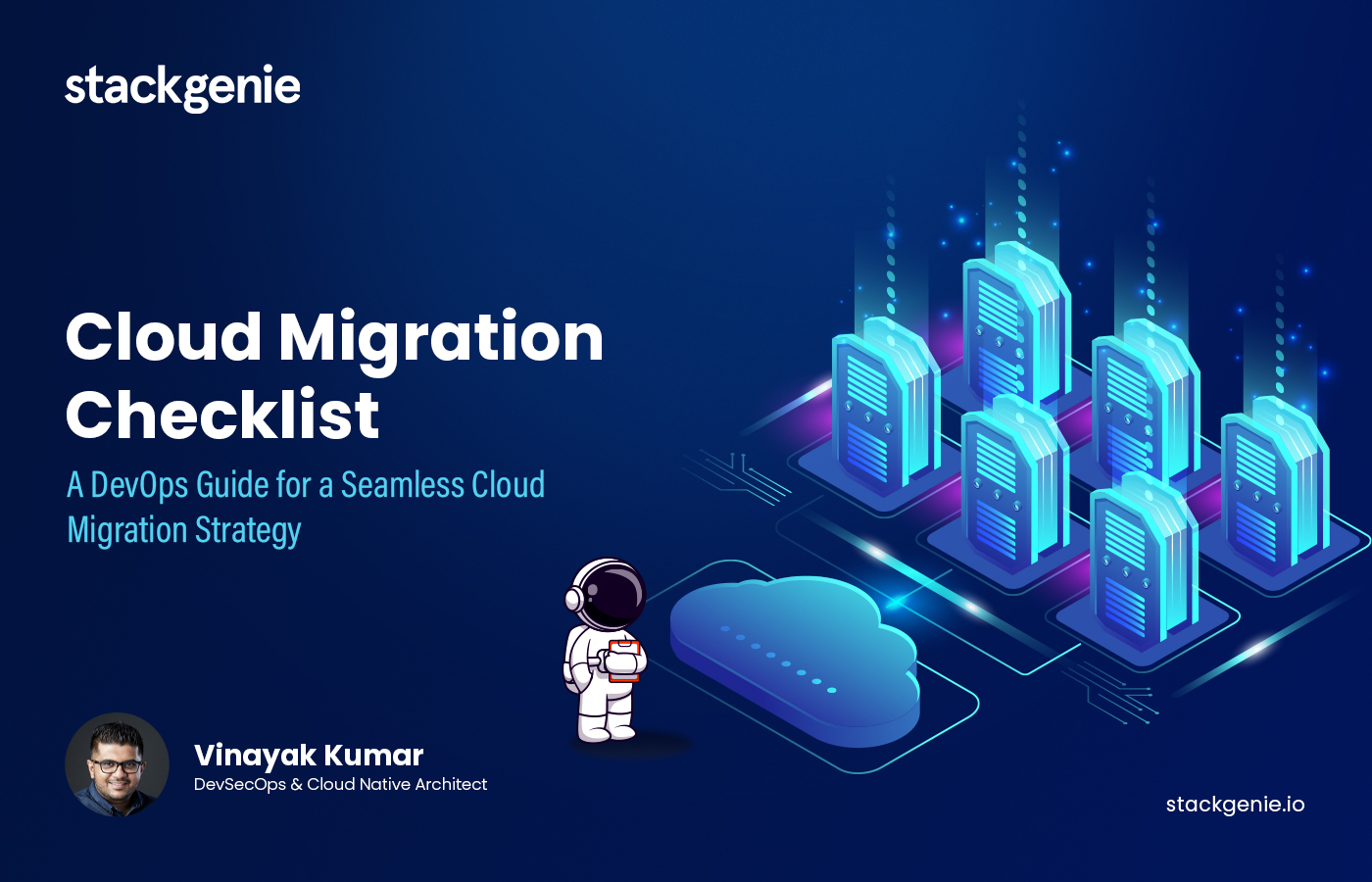What is Container Orchestration?
In the ever-evolving world of software development, deploying applications quickly and efficiently is key. Containers have become the backbone of modern application deployment, offering consistency across environments and simplifying the development process. However, as applications scale and environments grow in complexity, managing containers manually can become a daunting task.
In this blog, we’ll break down what container orchestration is, why it matters, and how it makes life easier for businesses and developers.
What are Containers?
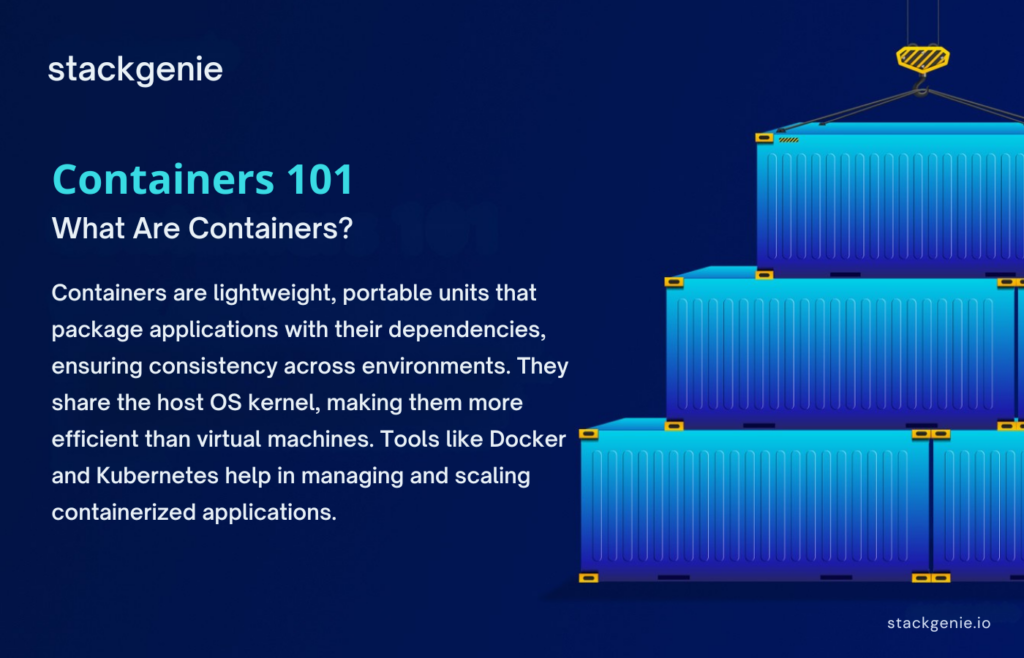
Before diving into container management (or orchestration), let’s first understand what a container is. Think of a container as a self-contained package that holds everything your software needs to run – the specific versions of programming language runtimes and libraries. It’s like a ready-to-deploy box that includes everything necessary to run an application, regardless of where it’s deployed.
Containers make it easier to share resources like CPU, memory, storage, and network at the operating system level. They also provide a way to package applications so they can run independently of the environment.
Now, let’s understand what container orchestration is.
What is Container Orchestration?
Container orchestration is a system that manages many containers’ life cycle automatically. Imagine you’re running a busy restaurant kitchen. Instead of managing each cooking station manually, you have a system that:
- Knows when to start cooking new dishes
- Adjusts the number of active cooking stations based on customer demand
- Makes sure all ingredients are available
- Handles any problems that come up
This is exactly what container orchestration does for containers. It manages everything automatically, making sure your applications run smoothly.
How Does Container Orchestration Work?
Here’s how container orchestration works in a simplified, step-by-step process:
1. Container Creation
- Developers create container images that package the application and its dependencies.
- These images are stored in a container registry and can be pulled when needed for deployment.
2. Container Deployment
- Container orchestration tools deploy containers from the images, distributing them across a cluster of machines (nodes).
- The tool makes decisions about where to deploy each container based on available resources.
3. Scheduling Containers
- Orchestrators schedule containers to run on the best available node in the cluster, considering factors like resource availability, CPU, and memory.
- It ensures containers are deployed in an efficient and optimal manner across the cluster.
4. Service Discovery
- Containers within the orchestration system automatically register themselves with a central service registry.
- This allows other containers to find and communicate with them, without needing specific IP addresses.
5. Load Balancing
- Orchestration tools distribute incoming traffic evenly across containers to avoid overloading any single container.
- This ensures that the system runs efficiently and user requests are handled smoothly.
6. Scaling Up or Down
- When demand for the application increases or decreases, the orchestration tool automatically scales the number of running containers up or down.
- It adds more containers to meet increased demand or reduces the number when traffic is low.
7. Health Checks and Self-Healing
- The orchestration system continuously monitors the health of running containers.
- If a container fails or crashes, the orchestrator automatically restarts or replaces it, ensuring continuous application availability.
8. Rolling Updates
- When a new version of the application is released, the orchestration tool gradually updates containers.
- It replaces old containers with new ones in a rolling fashion to avoid downtime, ensuring the application remains available.
9. Logging and Monitoring
- The orchestration system collects logs and metrics from containers and nodes in real time.
- This data is used for troubleshooting, performance monitoring, and ensuring that everything runs smoothly.
Related Read: Kubernetes monitoring tools
10. Resource Management
- The orchestrator allocates resources (such as CPU, memory, and storage) to each container based on their needs and the cluster’s available capacity.
- It optimizes resource usage by balancing the load across the system.
11. Failure Recovery and Auto-Restart
- If a container goes down, the orchestration system automatically spins up a new instance of the container in another location, minimizing downtime.
This process ensures that containerized applications are efficiently deployed, scaled, and managed across a distributed environment, maintaining high availability and reliability.
Related Read: What is Cloud-Native?
Why Do We Need a Container Orchestration?
Modern applications are built using a microservice architecture design, often involving hundreds or even thousands of containers. Managing these manually would be like juggling hundreds of balls at once – nearly impossible! This is where container orchestration becomes essential:
1. Automatic Scaling
When more users use our application, container orchestration automatically creates more containers to handle the request. When usage drops, it removes extra containers to save resources.
2. Self-Healing
If a container stops working (such as when an application crashes or something went wrong), the orchestrator automatically creates a new one to replace it. This ensures your application continues running without downtime, eliminating the need for manual intervention to get things back up and running.
3. Resource Efficiency
Every new technology aims to optimize resource utilization. In this case, the system places containers on servers in the most efficient way possible, ensuring that no server is overloaded while others remain idle. This not only saves money and boosts performance but also supports sustainability.
What are the Container Orchestration Tools?
The most widely used container orchestration platform is Kubernetes — and yes, you’ve probably heard about it countless times. Originally created as an internal project by Google, Kubernetes is now used by organizations worldwide. While Kubernetes is the dominant player in the space, there are other popular options, including:
1. Kubernetes
- Overview: The most popular open-source orchestration tool, originally developed by Google.
- Features: Offers advanced features like rolling updates, scaling, and robust community support.
- Ideal for: Large-scale, production-grade applications.
2. Docker Swarm
- Overview: A native orchestration tool for Docker.
- Features: Simpler to set up compared to Kubernetes but less feature-rich.
- Ideal for: Small to medium-sized projects.
3. Apache Mesos with Marathon
- Overview: A distributed systems kernel that can orchestrate containers and other workloads.
- Features: Highly scalable and suitable for hybrid environments.
- Ideal for: Enterprises with diverse workloads beyond containers.
4. AWS ECS (Elastic Container Service)
- Overview: A managed orchestration service by Amazon Web Services.
- Features: Integrates seamlessly with other AWS services.
Ideal for: Applications hosted in AWS ecosystems.
Key Benefits of Container Orchestration for Businesses
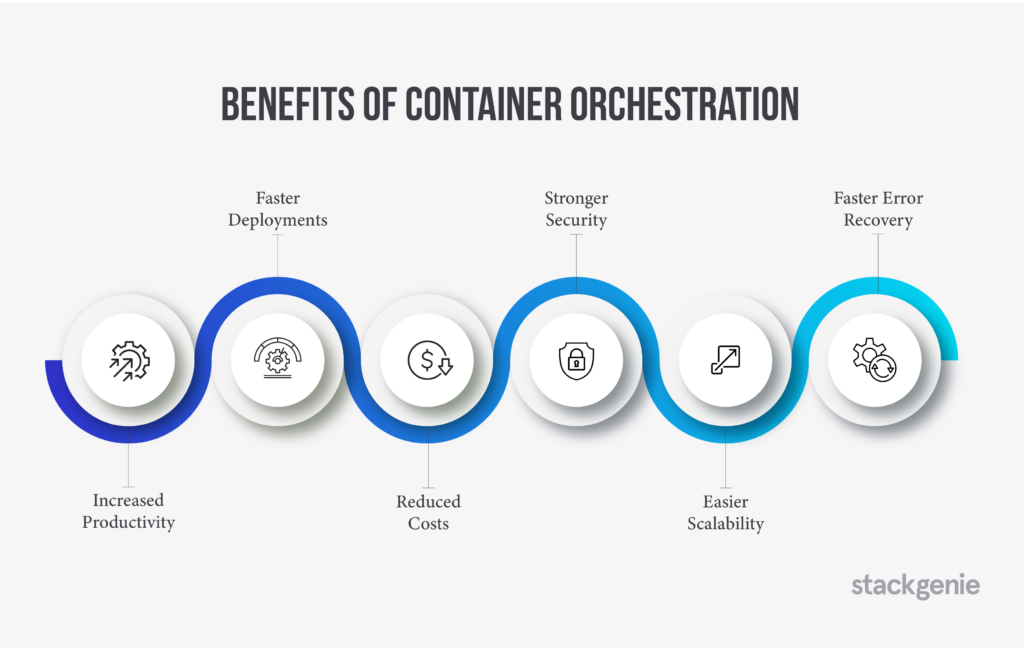
Container orchestration, especially with tools like Kubernetes, offers significant benefits for businesses, particularly those aiming to scale their operations efficiently. Key advantages include:
- Reduced Operational Costs: By optimizing resource usage, businesses can lower infrastructure expenses.
- Improved Application Reliability: Automatic failover and self-healing capabilities ensure applications remain operational, even during failures.
- Faster Deployment of New Features: Container orchestration streamlines deployment processes, allowing for quicker updates and new features.
- Better Scalability: As user bases grow, orchestration platforms automatically scale applications to meet demand, ensuring optimal performance.
- Reduced Manual Work for IT Teams: Automation reduces the need for manual intervention, freeing up IT teams to focus on more strategic tasks.
- New OS to cloud : Container orchestration simplifies the process of migrating from one cloud to another, allowing businesses to move applications smoothly without disruption
Transform Your Business with Cloud Integration and Orchestration
Container orchestration might seem complex at first, but it’s a must-have tool in today’s software development. It helps manage the challenges of running applications, so developers can focus on building great software instead of worrying about reliability and scalability. Whether you’re a small startup or a large company, understanding container orchestration is key to staying competitive in today’s digital world.
Stackgenie can help you seamlessly adopt cloud-native technologies, driving business growth with cutting-edge products and services. Our expertise in container orchestration and cloud migration ensures that your operations run efficiently, allowing you to focus on what matters most—growing your business.
